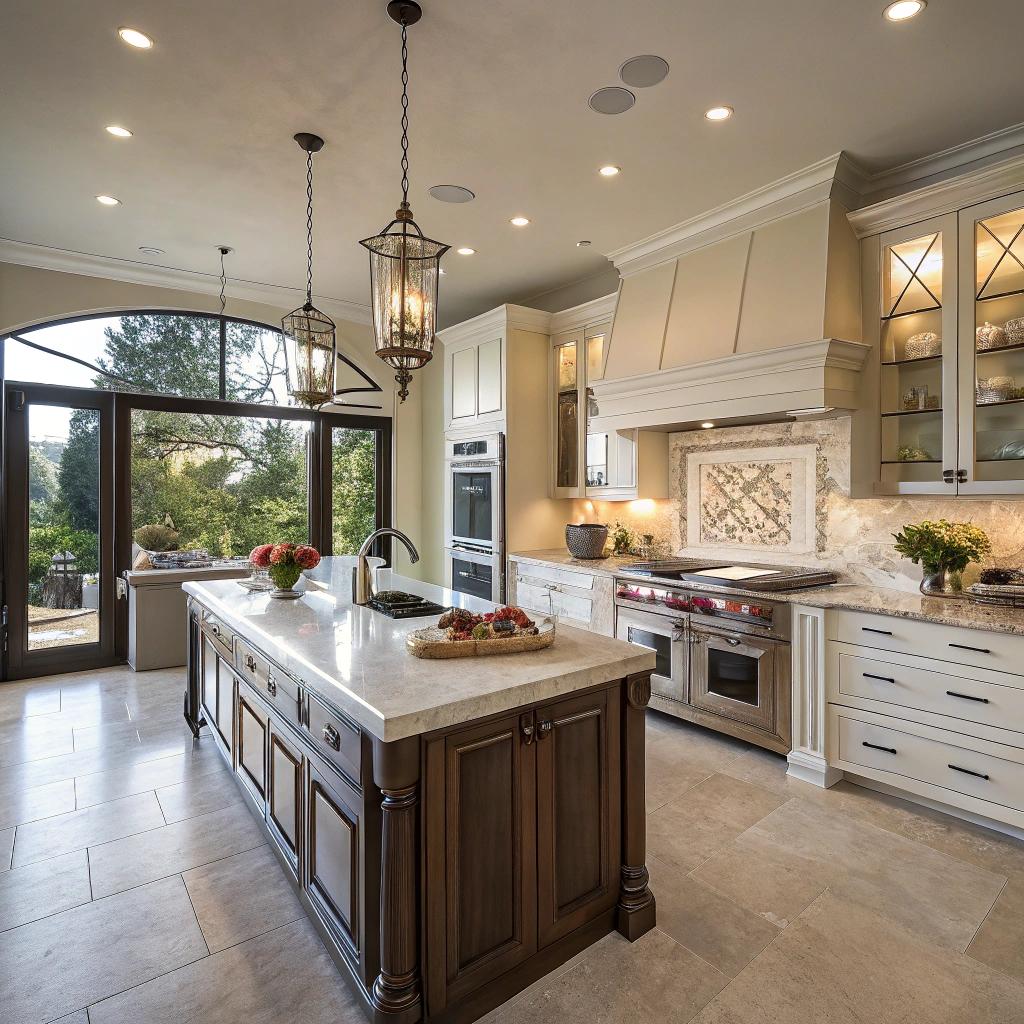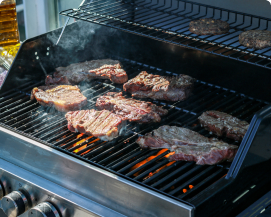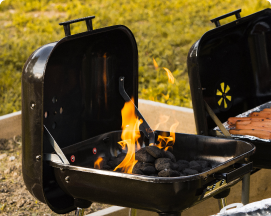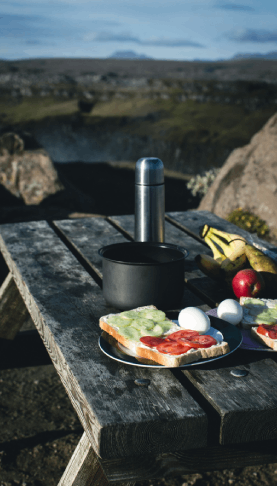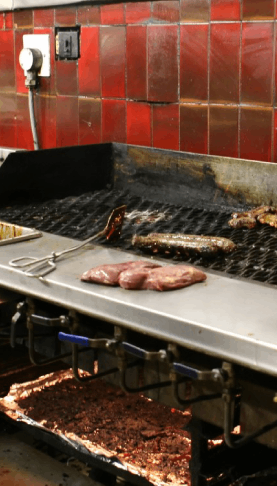If you want a chef style kitchen in Fort Collins, the basic idea is simple: plan the layout around how you cook, invest in strong surfaces and appliances, and work with a local Fort Collins remodeling team that understands both function and daily life. The details take more thought, but the goal stays the same: a space that actually makes cooking easier, faster, and more enjoyable.
I think many people start backward. They start with cabinet colors or a fancy range and not with how they move around the kitchen when they cook. Let us flip that. Picture one real cooking day in your week. Maybe you prep vegetables, roast meat, cook pasta, then bake dessert. If your future kitchen fits that day, it will probably fit most of your life.
How a chef style kitchen feels different from a normal one
A chef style kitchen is not only about stainless steel and big appliances. That can help, yes, but the real difference sits in flow and small details.
Strong cooking kitchens are designed around tasks, not around looks.
Think about these ideas while you plan:
- Short walking paths between sink, cooktop, and fridge
- Plenty of open counter near the main work areas
- Storage that lives where you actually use those items
- Good ventilation so cooking does not spread all over the house
- Lighting that lets you see the color and texture of food clearly
Some people say, “My kitchen is small, I cannot make it chef worthy.” I do not think that is always true. A small, well planned galley kitchen can feel sharper for cooking than a huge, poorly arranged room. Space helps, but planning matters more.
Start with how you cook, not with what you buy
Before you pick anything, walk through a typical cooking routine in your head. Or better, next time you cook, pay real attention. Where do you get stuck? Where do you bump into someone? Where do you put hot pans when you take them out of the oven?
Map your “work zones”
Most chef style kitchens have clear zones, even if they are not labeled that way.
| Zone | Main tasks | What should be nearby |
|---|---|---|
| Prep zone | Chopping, mixing, seasoning | Large clear counter, knives, cutting boards, mixing bowls, trash |
| Cooking zone | Searing, boiling, sautéing, simmering | Cooktop, oven, pans, oils, spices, spoons, ladles |
| Cleaning zone | Washing, drying, putting away | Sink, dishwasher, trash, towel hooks, daily dishes |
| Baking zone | Dough work, rolling, decorating | Cool surface, baking sheets, mixer, sugar, flour |
| Landing / serving | Plating, staging, serving | Open counter near dining area, plates, serving dishes |
You do not need five different zones. In a smaller Fort Collins kitchen, some of these can overlap. The point is to have at least one generous prep area and one safe, clear zone near the cooktop.
If you can prep, cook, and plate without twisting and crossing the room constantly, you are already close to a chef style layout.
Picking the right kitchen layout for a Fort Collins home
Homes in Fort Collins range from older bungalows to newer open plan houses. The structure of your house will guide your options. Still, you often have more choice than it first seems.
Common layouts and what they are good for
| Layout type | Best for | Chef style strengths | Possible drawback |
|---|---|---|---|
| Galley | Small spaces, condos, narrow rooms | Short walks, easy workflow, lots of counter per square foot | Less space for guests to hang out |
| L shaped | Open plans, corner rooms | Good for adding an island, clear division of zones | Can feel spread out if not planned well |
| U shaped | Serious home cooks, larger rooms | Tons of storage and counter, strong work triangle | Can feel tight if the “U” is too narrow |
| Island focus | Entertaining, families, open concepts | Great for prep and gathering, easy to cook and chat | Needs enough clearance all around to work well |
I have seen some Fort Collins homes where removing one non load bearing wall turned an awkward closed kitchen into a clean L with an island. Others kept their walls and built a strong galley instead. Both can work. It depends how much you cook, how often you host, and how you feel about guests watching you cook.
Appliances that actually help you cook
Many chef style kitchens advertise themselves with giant ranges. Those can be helpful, but not everyone needs six burners and double ovens. The better question is: what do you cook most?
Cooktop and oven choices
Think about this:
- If you sear steaks, stir fry, or use heavy pans, you want steady high heat. Gas or high quality induction work well.
- If you bake bread or pastries, a stable oven with even heat matters more than raw power.
- If you cook for large groups, extra burners or a second oven might make sense.
Some local cooks prefer gas because they feel it is easier to control. Others switch to induction for safety and speed. I used to be firmly on the gas side, then I cooked on a good induction top and had to rethink that. I still like the look of gas, but for tight kitchens, induction feels cleaner and cooler.
Ventilation is not optional for serious cooking
Fort Collins homes can be closed up tight in winter. Cooking without good ventilation can trap smells, moisture, and smoke.
If you upgrade nothing else in a chef style kitchen, upgrade the hood and ducting.
Look for:
- A hood that vents outside, not only recirculates
- Enough power for your cooktop width and heat level
- Filters that you can remove and clean easily
- Quiet enough that you actually use it every time
In some older homes, running new ductwork through joists or walls takes real planning, so this is where a solid contractor earns their fee.
Counters, sinks, and surfaces that work hard
Home cooks in Fort Collins often juggle normal meals, canning, baking, and maybe some grilling. Your counters and sinks carry much of that load.
Countertop choices for real cooking
You do not need the most expensive stone to cook well. You do need space and durability. Here is a simple comparison.
| Material | Pros for cooking | Possible concerns |
|---|---|---|
| Quartz | Low maintenance, stain resistant, consistent look | Can discolor under very high heat, seams may show |
| Granite | Handles heat fairly well, natural look, strong | Needs sealing, some patterns show spills less clearly |
| Butcher block | Gentle on knives, warm look, great for baking and prep | Needs regular oiling, can stain or scratch |
| Stainless steel | Heat proof, easy to sanitize, classic “pro kitchen” feel | Shows scratches and fingerprints, can feel cold in homes |
Some cooks blend surfaces. For example, quartz for most counters and a butcher block island top for prep and baking. That mix can balance daily care with a good work surface.
Sinks that match your cooking style
Many people regret picking a sink that is too small. If you deal with stock pots, sheet pans, and large cutting boards, a roomy single bowl often helps more than a split double.
Consider:
- Single large bowl vs. double bowl
- Depth that fits your height and back comfort
- Workstation sinks with built in ledges for cutting boards and colanders
- Durable faucet with pull down spray head and good reach
Workstation sinks sound like a gimmick at first, but for tight kitchens they turn one zone into a true prep station. I was doubtful when I first saw them, then watched a baker use one to rinse fruit, drain pasta, and proof dough without leaving that corner.
Storage that makes cooking faster, not just tidier
Chefs do not dig for tools. Everything has a home and usually that home is within one or two steps of where it is used. You can borrow that idea without making your kitchen look like a commercial line.
Design storage around tasks
Instead of asking “How many cabinets can I fit?” start by asking “Where will I chop? Where will I stir? Where will pans cool?” Then build storage around those answers.
- Keep knives and cutting boards near your main prep counter.
- Store oils, vinegars, and main spices near the cooktop, but not right above the highest heat.
- Place mixing bowls, colanders, and strainers near the sink and prep area.
- Keep daily dishes near the dishwasher to shorten unloading time.
Drawers often work better than deep lower cabinets. Pull out shelves, tray dividers, and narrow spice pullouts can turn odd spaces into real storage.
If you can reach what you need with one step and one motion, cooking feels calmer and quicker.
Lighting that makes food look and feel right
Lighting gets ignored a lot until someone tries to chiffonade herbs in a shadow. Fort Collins homes can have bright natural light during the day, but evenings and winter afternoons tell a different story.
Three layers of lighting that matter in a chef style kitchen
- General lighting for the whole room: ceiling fixtures or recessed lights.
- Task lighting for counters: under cabinet strips or pucks so you can actually see what you are cutting.
- Accent lighting for mood: pendants over an island or a table, maybe a subtle toe kick light.
For cooking, task lighting matters the most. Under cabinet LED strips are simple and make a major difference. Try to pick a color temperature that does not distort food color too much. Somewhere around neutral white often works well, not too yellow, not too blue.
Designing for Fort Collins climate and lifestyle
Fort Collins has its mix of dry air, bright sun, cold winters, and warm summers. That affects materials and use patterns more than some people expect.
How local climate touches your kitchen choices
- Dry air can be rough on natural wood. Good sealing and stable indoor humidity help protect cabinets and butcher block.
- Bright sunlight can fade some finishes. Think about UV exposure on your cabinet and counter choices.
- Cold winters often mean more soups, braises, and oven use. A durable range and strong hood pay off.
- Summer grilling might shift some cooking outdoors. A kitchen layout that connects well with the patio can be helpful.
I have seen some Fort Collins homeowners add a small “landing zone” near the back door for trays and serving dishes going to the grill. That sort of detail makes real life smoother, even if it never appears in a glossy photo.
Planning for guests, family, and traffic
Most people who want a chef like kitchen also like to share food. Maybe not every day, but fairly often. So you want a space that supports cooking and gathering without turning the cook into a traffic cop.
Protect the cook zone
One simple rule helps: keep guests close, but not inside your main work triangle.
- Use an island as a soft barrier. Prep and cook on the kitchen side, seat guests on the other side.
- Add a small beverage zone with fridge and glasses away from the cooktop, so people can help themselves without crowding you.
- Keep main walkways at least 42 to 48 inches wide so two people can pass safely.
Some families in Fort Collins with kids set up a “snack drawer” that children can reach on their own. That keeps small hands away from hot pots yet still lets them feel involved.
Budgeting for a chef style Fort Collins kitchen
This part is less fun, but ignoring budget rarely ends well. A chef style kitchen can cost quite a bit, but planning lets you spend where it matters most to you.
Where to invest more
If you cook often, it can make sense to focus spending on:
- Good quality range or cooktop and oven
- Strong, quiet ventilation
- Durable counters with enough square footage for real prep
- Drawer hardware and hinges that feel solid
- Lighting that avoids shadows on work areas
Cabinet style, fancy backsplashes, and luxury fixtures can be dialed up or down more easily than core function. I would rather have simple shaker cabinets with strong drawers and a reliable range than ornate doors with a weak stove.
Places to save without hurting cooking performance
- Standard cabinet sizes when possible, fewer custom odd shapes
- Mid range appliances that focus on function rather than smart features you will not use
- Simple tile patterns with good grout instead of complex designs
- Open shelving in small sections instead of extra upper cabinets everywhere
One thing I think people underestimate is the cost of small layout changes versus large structural changes. Moving a wall with electrical, plumbing, or gas can add a lot. Sometimes it is worth it, sometimes not. A good contractor will explain both paths, not only push the bigger one.
Working with a Fort Collins remodeling contractor
For a chef style kitchen, the contractor you choose matters as much as the materials you pick. You need someone who respects how you cook, not only how the kitchen will photograph.
Questions to ask before you sign
- Have you done kitchens for clients who cook daily or semi professionally?
- How do you handle changes if I realize I need something different during the project?
- Who will be my main contact day to day?
- How do you protect the rest of the house from dust and debris?
- What is realistic for timeline, including inspections and any delays?
If a contractor cannot talk clearly about workflow, clearances, and ventilation, that is a red flag. Also, if they rush you toward trendy layouts without asking how you cook, that is another sign to slow down.
Small details that feel like a chef designed your kitchen
Once the main layout is set, many of the “chef like” touches show up in smaller choices. These do not all cost much, but they add up.
- A heat resistant trivet section near the oven, so hot sheet pans always have a safe landing spot.
- Pull out trash and recycling directly under or next to your main prep area.
- A place for large cutting boards to stand vertically instead of sliding around in a pile.
- Hooks or rails for common tools near the cooktop, at a safe distance from open flames.
- A narrow pullout or drawer just for spices, organized so labels face you.
- An outlet on the island for mixers, food processors, or blenders.
Those details might sound small, but think of how often you grab a spoon, toss scraps, or reach for salt. Cutting two seconds from tasks you do fifty times in one meal changes the whole feel of cooking.
Balancing restaurant inspiration with home comfort
If you love restaurants, it is easy to want stainless steel everywhere, open shelving only, and a huge range. Some of that can be great. Some of it can be tiring in a home kitchen.
For example, open shelves look nice and let you grab plates quickly, but they also collect dust and grease. In a restaurant, those shelves get constant use and daily cleaning. In a home, that level of cleaning may not happen, at least not for most people. So a mix of closed storage with one or two open sections can be a nice middle ground.
The same goes for stainless counters. They feel familiar if you spend time in professional kitchens, but scratches are part of the look. If that will bother you, it might not be the right choice for daily home life.
I like to think of it this way: borrow the workflow and the practical habits from restaurants, then soften the materials and finishes a bit for home comfort.
A short Q&A to wrap things up
Q: What is the single most important feature in a chef style Fort Collins kitchen?
A: For most cooks, it is a generous, well lit prep area with tools and ingredients close at hand. If you can chop, mix, and plate in one logical zone, everything else feels easier.
Q: Do I really need professional grade appliances at home?
A: Not always. A reliable mid range stove with strong burners, a steady oven, and good ventilation can serve most serious home cooks very well. Professional equipment can be nice, but it is not required for great results.
Q: My kitchen is small. Is a chef style layout still realistic?
A: Yes, if you focus on flow and smart storage instead of trying to fit every feature. A tight galley with good counters, drawers, and lighting can work far better than a larger but cluttered space.
Q: How do I keep my new kitchen from feeling dated too quickly?
A: Stick to simple cabinet lines, neutral counters, and a layout that serves cooking first. You can change hardware, paint, and smaller decor later, but moving walls or major appliances again is much harder.
Q: Where should I start if I feel overwhelmed by choices?
A: Start with one cooking day from your real life. Write down what frustrates you in your current kitchen during that day. Then plan fixes around those points. Trends and finishes come after that, not before.


